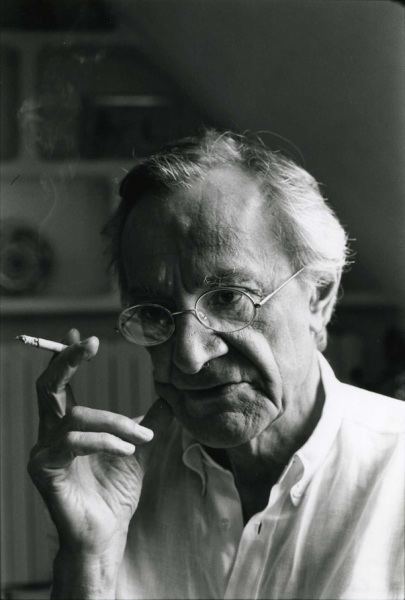
Sylvère Lotringer was in conversation with Dorothée Perret in the Paris, LA #10 article ‘The Importance of Being Unfinished,’ with an introduction by Barlo Perry.
On Wednesday night he was at Ooga Booga’s second space at 356 Mission Road, to celebrate the launch of Semiotext(e)’s new publication Schizo-Culture, along with Semiotext(e)’s Noura Wedell and Hedi El Khot. For those of us who were only somewhat familiar with Semiotext(e), as an independent publisher inhabiting a lofty space in the art world (Semiotext(e) is included in the 2014 Whitney Biennial) and academia, and who brought the work of many French theorists to the United States, the evening was only somewhat informative. A basis of knowledge and understanding of the topic was already assumed, so the panelists dove straight in.

Chris Kraus introduces Schizo-Culture at Ooga Booga
The Schizo-Culture conference took place at Columbia University in November of 1975. Lotringer described it as a complete shock. He had expected about fifty people to show up, but instead there were a thousand. He said the conference erupted into creative chaos. Of those who presented at the conference were French philosophers and thinkers Michel Foucault, Gilles Deleuze, Jean-Francois Lyotard, and Félix Guattari, and a wide range of Americans such as William Burroughs, John Cage, and Judy Clark. Lotringer said that when he thinks about schizo-culture, it is all about New York City, and the good energy that was felt there at the time. At the time it was joyful to be in New York City with all of the creative people there, the “old art world,” the punks, the young radicals, and the young academics. “People were afraid to go to New York back then, and they could have never predicted that 42nd St would turn into Disneyland,” said Lotringer.

Noura Wedell, Sylvère Lotringer, and Hedi El Khot
Three years later, Semiotext(e) published the Schizo-Culture issue of their journal. He described the issue as being very fun to put together, and introduces it in the book as being “…not the same as the Schizo-Culture conference. The issue was put together three years after the conference in a very different context with very different intentions and with different material. …[It] doesn’t recount the shock encounter that took place between French and American philosophers and artists at ‘the Event,’ but instead consummated the magazine’s rupture with academe. It also took Semiotext(e) one step closer to the New York art world at an exciting and innovative time. No one could have anticipated that in just five years it would mutate into an art market, and then into an art industry. It was more than anyone had bargained for.” (v)

Jack Smith, Jungle Island, 1967
Lotringer’s introduction to the Schizo-Culture conference and the Schizo-Culture issue of the journal was followed with Jack Smith’s film Jungle Island from 1967. Lotringer said that Smith knew nothing about French philosophy, yet he embraced the same ideas. He said he had a presence and a simplicity, that you just need to look at the world around you. His beautiful film was a jungle island dream, a layering of images of tropical plants, water, and a drag queen in heavy colorful makeup sparkling in the sun.
After the film, Noura Wedell and Hedi El Khot asked Lotringer a few questions, trying to start a discussion, but it was mostly Lotringer who spoke. The questions were opened up to the audience, and with each one, Lotringer became more and more impassioned. Towards the end he stated, “We are taught to be individuals, to draw attention to ourselves. That is how we are raised. Subjectivity is a false problem. You have to break from individualism by being mad.”








